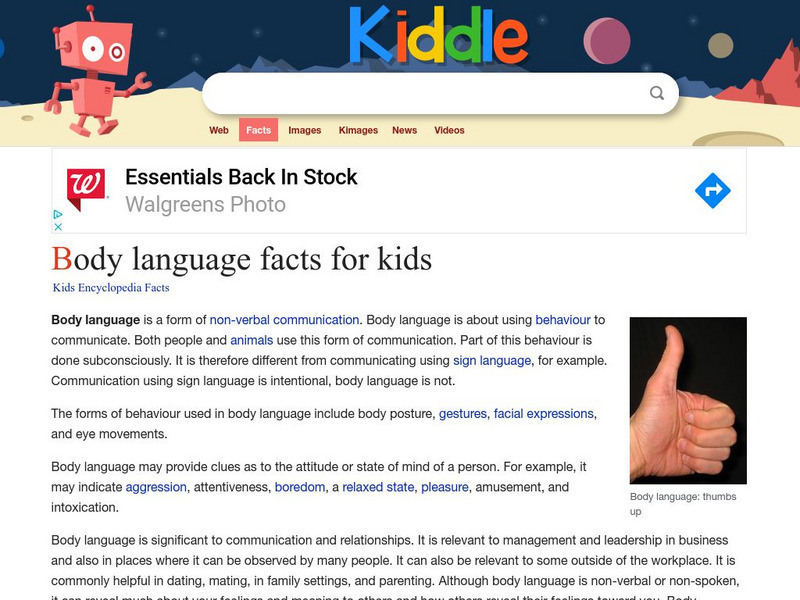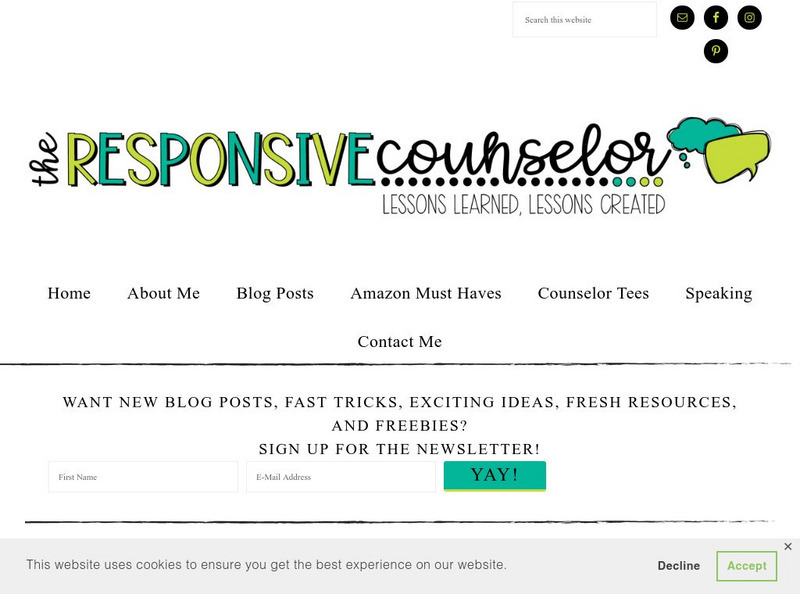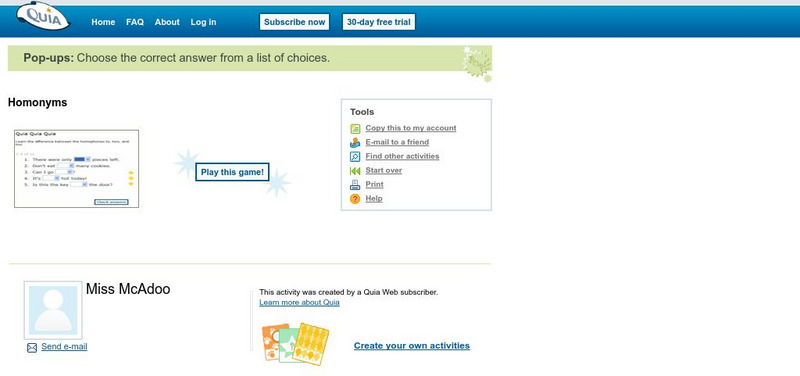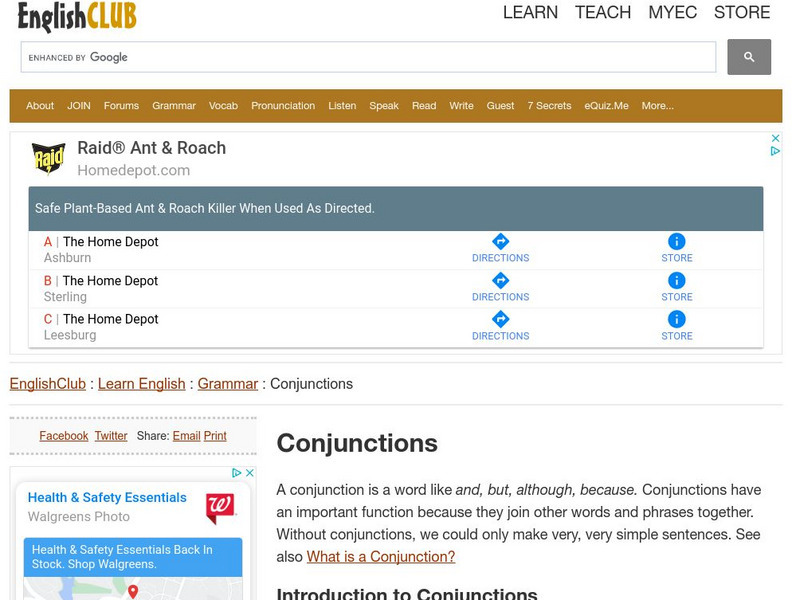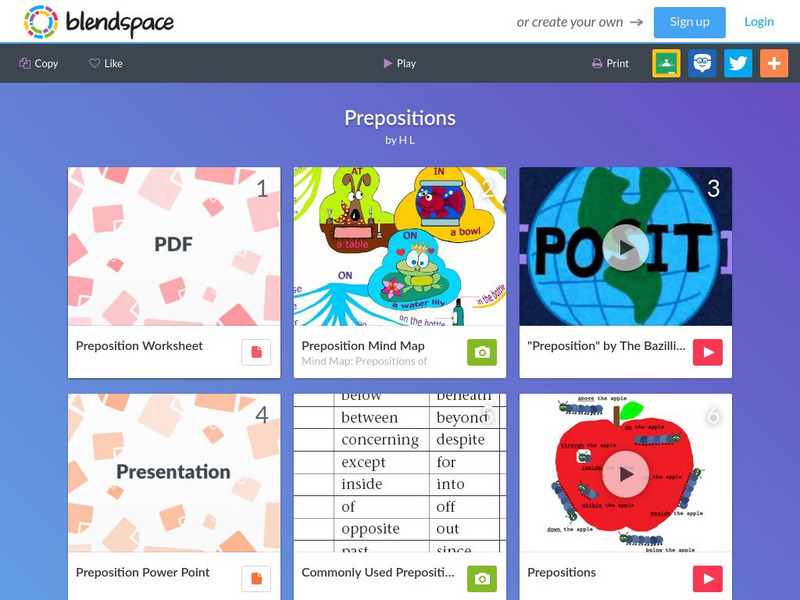Education.com
Education.com: Sl.4.4 Worksheets: Orally Report on a Topic or Text
[Free Registration/Login Required] A site with links to 2 worksheets and 6 lessons that can be downloaded and printed for student use while building skills with standard SL.4.4: Report on a topic or text, tell a story, or recount an...
Better Lesson
Better Lesson: Sl.4.2: Pose an Respond to Specific Questions
Links to 38 lessons and activities that build student skills in standard SL.4.2: Pose and respond to specific questions to clarify or follow up on information and make comments that contribute to the discussion and link to the remarks of...
Better Lesson
Better Lesson: Sl.4.1c: Pose an Respond to Specific Questions
Links to 60 lessons and activities that build student skills in standard SL.4.1c: Pose and respond to specific questions to clarify or follow up on information and make comments that contribute to the discussion and link to the remarks...
Other
Ef Education First: English Grammar: Relative Adverbs
Information and examples about relative adverbs and how they are used to introduce relative clauses.
PBS
Pbs Learning Media: How to Use Prepositions
Prepositions indicate locations, whether physical or in time. Around, in, outside, before, during. Prepositions help us know the when and where! [0:48]
PBS
Pbs Learning Media: How to Use Correlative Conjunctions
Either, nor? Or, neither? Neither! You use correlative conjunctions in connecting two equal grammatical items. If a noun follows "either," then a noun will also follow "or." If a noun follows "neither," then a noun will also follow...
PBS
Pbs Learning Media: How to Avoid Inappropriate Shifts
Watch out for inappropriate shifts in pronoun number and person! A shift is when there is a disparity between the perspectives, from first person, second person, and third person. It is important to maintain perspectives when referring...
Other
Take Lessons: How to Read Body Language: Examples From Around the World
This resource provides several examples of different meanings of various types of body language.
Other
Kiddle Encyclopedia: Body Language Facts for Kids
This resource provide a list of common types of body language. Each type of body language is described.
Other
The Responsive Counselor: Body Language and Tone of Voice Lesson Plan
This blog post from shares several activities that will help students understand how to interpret voice tone and body language.
South Carolina Educational Television
Know It All: Interjections
Fourth graders will learn about interjections and how to use them in their writing.
ABCya
Ab Cya: Parts of Speech Quest 8 Interjections
A terrible dragon has attacked the kingdom of Lingua and only a Interjections Master will be able to save it. Will it be you? Put your knowledge of interjections to the test as you venture through Parts of Speech Quest - Interjections!
English Zone
English Zone: Verb and Preposition Combinations B
After reading a sentence, students use the drop-down menu to select the correct preposition to fill the blank in the sentence. This practice exercise gives a score upon completion.
Quia
Quia: Parts of Speech Games
Four interactive games for reinforcing the eight parts of speech. Created by a 6th grade teacher.
Quia
Quia: Homonyms
The point of this interactive exercise is to distinguish among coordinating conjunctions, correlative conjunctions, and interjections.
English Club
English Club: Learn English: Grammar: Preposition
Links to information about prepositions including: What is a preposition, preposition list, a simple rule for prepositions, prepositions of place, and propositions of time.
English Club
English Club: Learn English: Grammar: Prepositions of Place
A graphic and example sentences to demonstrate how some prepositions show position or place.
English Club
English Club: Learn English: Grammar: Prepositions of Time: At, In, On
Information and examples of using the prepositions "at," "in," and "on" to indicate time.
English Club
English Club: Learn English: Grammar: Conjunctions: Coordinating Conjunctions
An explanation of coordinating conjunctions with examples and example sentence. A chart with the FANBOYS acronym for remembering coordinating conjunctions is also provided.
Other
Grammaring: Relative Adverbs: Where, When, Why
Notes and examples explaining relative adverbs and how they are used in sentences.
TES Global
Blendspace: Parts of Speech
A nine-part learning module with links to images containing information and graphic organizers about the parts of speech.
TES Global
Blendspace: Prepositions
A six-part learning module with links to images, slides, and videos about prepositions.
ClassFlow
Class Flow: Prepositions
[Free Registration/Login Required] Using the sport of Rugby for context and examples, this flipchart presents many prepositions. A preposition is defined and students are asked to create sentences using prepositions.
ClassFlow
Class Flow: Prepositions
[Free Registration/Login Required] This flipchart presents a lesson on prepositions. Activities give students practice using them correctly. Assessment questions evaluate understanding.







